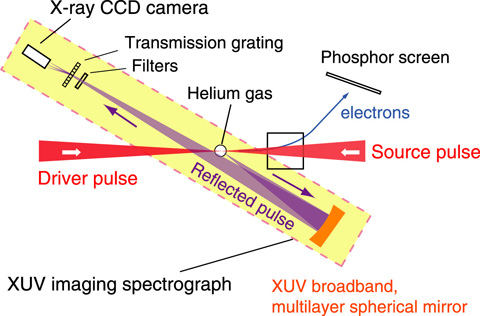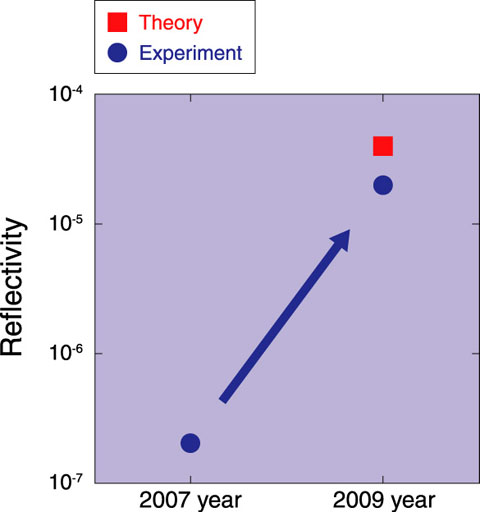
Fig.4-4 Setup of the counter-propagating flying mirror experiment

Fig.4-5 Improvement of the reflectivity of the flying mirrors
We invented flying mirrors that propagate in plasma almost at the speed of light by using intense laser pulses. The flying mirror is a dense plasma electron shell whose velocity is equal to the group velocity of laser pulses propagating in the plasma. Because it can be used as a mirror that reflects light, the flying mirror is expected to be an effective device for increasing the intensity of the laser and converting it to ultrashort, coherent X-rays. In 2007, we demonstrated that such a flying mirror was produced and that it could reflect incoming laser pulses. However, the number of reflected photons was smaller than the theoretical estimate.
To improve reflectivity, we improved two major points in our experiment. In the first experiment, the laser used was r elatively weak, just 3 TW. Therefore, we used the 10 TW J-KAREN laser at our institute. In addition, we changed the experimental configuration. In the first experiment, the source pulse (pulse to be reflected) was directed at an angle, but we adopted a counter-propagating setup.
In the counter-propagating setup, a laser pulse that produces flying mirrors (driver pulse) and the source pulse should be overlapped within 30 μm. For this purpose, we have developed a new monitoring system that samples a part of the returning laser pulses. In addition, we have implemented an extreme ultra-violet (XUV) imaging spectrograph with a wide acceptance angle range to measure the reflected light in the counter-propagating setup as shown in Fig.4-4.
After careful adjustment of the collision of the two laser pulses in plasma, we observe a broad spectrum ranging from 12.5 to 22.0 nm in the XUV spectrograph. This corresponds to the flying mirror velocity that is 98%∼99% of the light speed. This value is consistent with the one calculated from the plasma density. The obtained photon number is 7.9 × 109, and the reflectivity is 2 × 10-5. The reflectivity, as shown in Fig.4-5, is half of the theoretical estimate. Thus, we have proved that the flying mirror has a high reflectivity as predicted theoretically. The photon number is higher than that in 2007 by 106. This result verifies the realization of high-brightness X-ray sources based on flying mirrors.